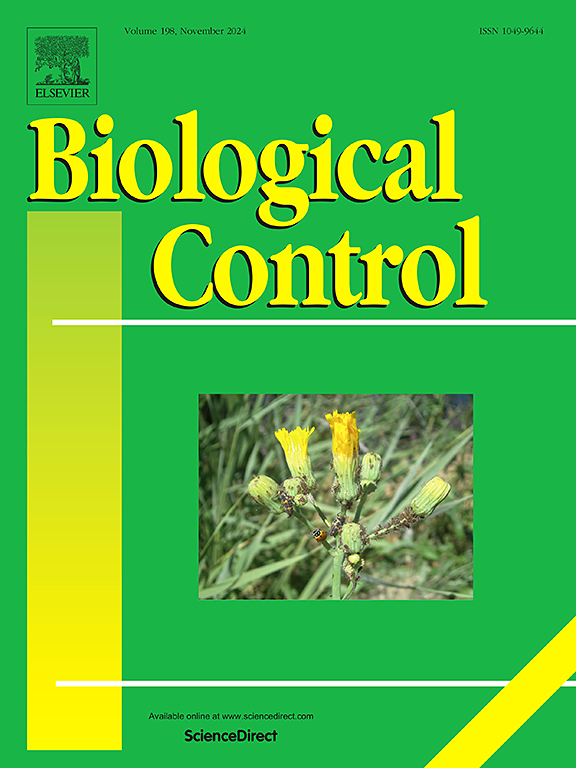Wheat intercropping with canola promotes biological control of aphids by enhancing enemy diversity
IF 3.7
2区 农林科学
Q2 BIOTECHNOLOGY & APPLIED MICROBIOLOGY
引用次数: 0
Abstract
Intensive agriculture relies largely on monocultures and plant protection chemicals to sustain food security but leaning towards such practices undermines environmental sustainability due to negative impacts towards ecosystem services. This increases the need of biodiversity driven pest management strategies especially for wheat, one of the main food crops, worldwide. In Pakistan, which is comprised in area origin of wheat, we evaluated the biological control potential of canola-wheat strip cropping and alternate row intercropping compared to wheat sole cropping against wheat aphids in crop seasons of 2021 and 2023 in organic and conventional fields. Abundance, evenness and diversity of aphids and natural enemies were lower and higher, respectively, in alternate-row intercropping compared to wheat monocrop in both conventional and organic farm types. Contrarily, pest richness was similar among cropping systems in both farming types in 2023, but natural enemies’ richness was greater in intercropped plots in both the years. Natural enemies’ density and diversity indices proved to be strong predictors of aphid suppression in the fields. Increased enemies and reduced aphids in the diversified systems show positive complementarity among the enemies having different hunting behaviours and suggest the acquisition of floral and prey resources provided by canola. Our study has implications for the management of wheat aphids in its area of origin through ecological intensification at a pilot scale for steering agricultural systems toward agroecological redesign.
小麦与油菜间作通过提高害虫多样性促进蚜虫的生物防治
集约化农业主要依靠单一栽培和植保化学品来维持粮食安全,但由于对生态系统服务的负面影响,倾向于这种做法破坏了环境的可持续性。这增加了对生物多样性驱动的病虫害管理战略的需求,特别是对世界范围内的主要粮食作物之一小麦。在巴基斯坦这个小麦产区,我们评估了2021年和2023年有机田和常规田油菜-小麦带状种植和隔行间作与单种小麦相比对小麦蚜虫的生物防治潜力。在常规和有机两种农作类型中,隔行间作的蚜虫和天敌的丰度、均匀度和多样性均低于小麦单作。相反,2023年两种耕作类型间害虫丰富度相似,但间作区天敌丰富度均高于间作区。天敌密度和多样性指标是田间蚜虫抑制的较好预测指标。天敌数量的增加和蚜虫数量的减少在不同捕食行为的天敌之间表现出正互补性,表明油菜能够获取植物和猎物资源。我们的研究对通过中试规模的生态集约化来引导农业系统走向农业生态重新设计的小麦蚜虫原产地管理具有启示意义。
本文章由计算机程序翻译,如有差异,请以英文原文为准。
求助全文
约1分钟内获得全文
求助全文
来源期刊

Biological Control
生物-昆虫学
CiteScore
7.40
自引率
7.10%
发文量
220
审稿时长
63 days
期刊介绍:
Biological control is an environmentally sound and effective means of reducing or mitigating pests and pest effects through the use of natural enemies. The aim of Biological Control is to promote this science and technology through publication of original research articles and reviews of research and theory. The journal devotes a section to reports on biotechnologies dealing with the elucidation and use of genes or gene products for the enhancement of biological control agents.
The journal encompasses biological control of viral, microbial, nematode, insect, mite, weed, and vertebrate pests in agriculture, aquatic, forest, natural resource, stored product, and urban environments. Biological control of arthropod pests of human and domestic animals is also included. Ecological, molecular, and biotechnological approaches to the understanding of biological control are welcome.
 求助内容:
求助内容: 应助结果提醒方式:
应助结果提醒方式:


